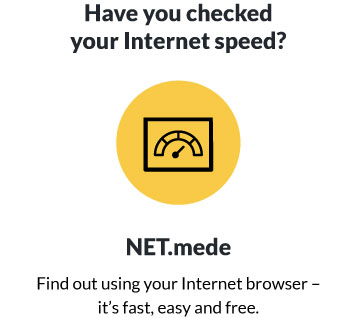ICP - Autoridade Nacional de Comunicações (ICP - National Communications Authority)
Regulation
This is not an official translation of the law
(Regulation on Quality of Service)
Regulation number 46/2005 (Regulation on Quality of Service), that applies to providers of access to the public fixed telephone network and publicly available fixed telephone service (FTS), was published in the Official Gazette, on 14 June 2005, so as to implement the provision set out in article 40 of Law number 5/2004, of 10 February, and also to ensure that clear, up-to-date and comparable information on quality of service is provided to end users.
In the last few years, the FTS has undergone several regulatory, technological and commercial changes, which have led to the provision of new and significant commercial offers to the market.
On the other hand, the experience gained throughout the 3 years during which ANACOM monitored the enforcement of the Regulation and quality of service issues which have been raised, have led to the conclusion that: (i) some of the concepts and provisions in the Regulation have not been properly made clear and/or detailed, and thus providers have put forward uncertainties and requested clarifications thereon; (ii) it will be useful to establish mechanisms that contribute to a better disclosure to users of information provided for in the Regulation, as well as to a more effective verification by ANACOM of compliance therewith; (iii) some parameters need to be adjusted, so that they may be more easily understood by end users and also to adequately reflect more pressing issues in the scope of the FTS; and (iv) the disclosure of information on quality of service is particularly relevant as regards choices made by customers with lower bargaining strength (residential customers and smaller non-residential customers), as for larger customers, offers are “designed” to their needs and the associated quality of service is generally higher.
Within this framework, and to ensure that the Regulation on Quality of Service contributes to provide users with access to clear, up-to-date and comparable information on quality of service, enabling the choice for the provider which is most able to meet the respective needs:
Pursuant to article 9a) of the Statutes of ICP - ANACOM, approved by Decree-Law number 309/2001, of 7 December, paragraph 2 of article 40 and paragraph 1 of article 125, both of Law number 5/2004, of 10 February, the Management Board of ANACOM, having undertaken the regulatory procedure provided for in article 11 of the above-mentioned Statutes, and the general consultation procedure provided for in article 8 of Law number 5/2004, of 10 February, hereby determines to approve the following amendment to Regulation number 46/2005, of 14 June:
Article 1
Amendment to Regulation number 46/2005, of 14 June
Articles 6, 7 and the Annex to Regulation number 46/2005, of 14 June, are hereby amended to read as follows:
«Article 6
(Information to be submitted to ANACOM)
1 – (...)
2 - (...)
3 - (...)
4 - Undertakings shall submit every year to ANACOM, up to the last working day of January, the link to the webpage where, according to article 7, the information on quality of service is made available.
5 – (former paragraph 4).
6 – ANACOM may set out forms to be observed by undertakings to better organize information that must be sent to this Authority pursuant hereto.
Article 7
(Making information available to end-users)
1 – (...)
2 - (...)
3 - (...)
4 - Information on quality referred to in paragraph 2 shall be disclosed and made available to users, in writing, in all the service’s sales points, by sending contracts to users’ homes or through distance communication.
5 – For the purpose of the preceding paragraph, service’s sales points shall be deemed to mean all shops and other locations where electronic communications providers, their agents and other distribution partners market or promote the sale of electronic communications services covered by this Regulation.
6 – (Former paragraph 5).
7 – For the purpose of paragraphs 4 and 6, ANACOM is entitled to define and establish a “Disclosure Model” with a set of rules/procedures complementing those laid down herein, so that information provided is more easily found, visible, harmonized and clear.
ANNEX
Parameters of Quality of Service (PQS) for access to the public telephone network at a fixed location and publicly available fixed telephone service (FTS)
The parameters of quality of service established in the present annex and identified in the following table are based on ETSI Guide EG 201 769-1 V1.1.1 (2000-04):
|
Parameters |
Presentation of results |
Type of access |
Scope of application |
|
PQS1 – Supply time for initial connection |
a) Time to supply 95% of the fastest setups, involving both network connection and service activation; b) Time to supply 95% of the fastest setups, involving only service activation; c) Time to supply 99% of the fastest setups, involving both network connection and service activation; d) Time to supply 99% of the fastest setups, involving only service activation; e) %age of connection supply orders completed by the date agreed with the customer |
Direct access |
The measurement of the parameter applies:
To FTS offers intended for residential customers; To standard FTS offers intended for non-residential customers |
|
PQS2 – Fault rate per access line |
a) Number of reported faults per access line |
Direct access |
The measurement of PQS2 and PQS3 applies to fault reports concerning communications originating in FTS access lines in the following market segments: Residential customers; Non-residential customers that subscribed standard FTS offers.
Calculation of parameters excludes fault reports on: Calls to audiotext services, Internet access services and private voice network services; Calls made through virtual call cards; Calls made from public pay-phones; Service facilities (deemed to mean as ancillary services within the meaning of ITU-T Recommendation I.250)
|
|
PQS3 - Fault repair time |
a) Time to repair 95% of the fastest repairs b) %age of faults repaired by the target date set by the provider for 95% of the fastest repairs |
Direct access. |
PQS1 – Supply time for initial connection
Definition:
1.1 - The PQS1 is intended to measure the duration, in calendar days, from the instant the customer places with the provider a valid service order for supply of a connection for access to the public fixed telephone network, to the instant a working service is made available for use, regardless of the supporting technology.
1.2 - To calculate the present parameter, a valid service order means any order placed with the provider and accepted by it, including:
A new connection (a customer’s first connection, a new connection due to change of address, or connection of a customer whose previous connection was provided by another provider); or
An additional connection of a provider’s customer (in the same address or otherwise); or
Migration from a customer’s analogue line to ISDN.
1.3 - Cases where a new FTS connection is set up within a “package” including the provision by the same provider of other electronic communications services shall not be excluded from the measurement of this parameter.
1.4 - Situations where the provider uses third party’s infrastructures (such as local loop, leased lines) to supply connection to the service shall not be excluded from the measurement of this parameter.
1.5 - Connection for access to the public fixed telephone network shall mean the set up and effective provision to the customer, for its own use, of a connection between the local switch or concentrator and the first terminal device for exclusive use of the customer.
1.6 - The measurement of this parameter applies to the following offers and market segments:
FTS offers intended for residential customers 1;
Standard FTS offers 2 intended for non-residential customers 3, and must be performed separately for each of the referred market segments.
1.7 - The PQS1 shall be measured:
In the scope of valid connection orders covering both network connection and service activation;
In the scope of valid orders where the network connection has already been established by the same provider, which will now activate the service.
1.8 - Providers of FTS offers “designed” on a case-by-case basis may measure this parameter and make it available, if they so wish, according to the needs/characteristics of customers, insofar as this measurement and information are specified separately from those made in the scope of point 1.6.
1.9 - Where a setup order involves more than one connection for access to the public fixed telephone service, the setup of each connection counts as a separate order for measurement purposes.
1.10 - Temporary setups, deemed to be those where the service connection has maximum duration of one month, shall not be considered for PQS1 measurement purposes.
2 - To measure the quality of service according to this parameter, providers must collect:
a) Time to supply 95% of the fastest setups, involving both network connection and service activation;
b) Time to supply 95% of the fastest setups, involving only service activation;
c) Time to supply 99% of the fastest setups, involving both network connection and service activation;
d) Time to supply 99% of the fastest setups, involving only service activation;
e) Percentage of connection supply orders completed by the date agreed with the customer.
3 - Calculation method for the information provided for in points a), b), c) and d) of the preceding paragraph:
3.1 - (...)
3.2 – (former point 3.4).
3.3 - The parameter calculation shall exclude:
Delay for which the customer is responsible, from the instant the provider is informed or aware that customer premises are not able to supply the connection, up the moment where this situation is unblocked.
Delay associated to the setup of the first terminal device for the customer’s exclusive use, where this is not incumbent on the provider.
3.4 – (former point 3.6).
3.5 – This parameter refers to connection orders completed within the data collection period.
4 - Calculation method for the information provided for in point e) of paragraph 2:
4.1 - Date agreed with the customer is deemed to mean:
Any date requested verbally or in writing by the customer, and accepted by the provider;
Any date set verbally or in writing by the provider and not refused by the customer.
4.2 - (...)
4.3 (Repealed).
PQS2 – Fault rate per access line
1. Definition:
1.1 - The PQS2 measures the number of valid fault reports made by users to the services of the provider, on account of service interruption or degradation, attributable to the provider’s network, to any public network connected thereto and involved in communications eligible 4 for parameter calculation purposes, or resulting from problems in telecommunication infrastructures in buildings.
1.2 - (...)
1.3 - (former point 1.4).
1.4 - The measurement of this parameter applies to any valid fault due to interruption or degradation of a service provided to:
Residential customers 5;
Non-residential customers 6 that subscribed standard 7 FTS offers,
and must be performed separately for each of the referred market segments.
1.5 - Providers of FTS offers “designed” on a case-by-case basis may measure this parameter and make it available, if they so wish, according to the needs/characteristics of customers, insofar as this measurement and information are specified separately from those made for market segments referred to in point 1.4.
1.6 - Each valid report regarding a basic or primary rate access shall be counted as one fault, regardless of the number of activated channels the fault has affected.
1.7 - (former point 1.6).
1.8 - (former point 1.7).
1.9 - (former point 1.8).
1.10 - Faults in the connection between the local switch or concentrator and the first terminal device for exclusive use of the customer, including those resulting from problems in telecommunication infrastructures in buildings, shall not be excluded from the measurement of this parameter.
1.11 – In the scope of FTS offers supported in GSM networks, the following shall not be excluded from the measurement of this parameter:
Faults arising from problems in base stations or any other network elements;
Faults of the customer card for which the provider may be held responsible (such as faults due to a remote card configuration with no intervention on the part of the terminal user).
1.12 – The PQS2 measurement excludes network faults originating in the first terminal device for exclusive use of the customer, as well faults in customer equipment (including faults of the customer card for which the provider is not responsible, in the case of FTS offers supported in GSM networks).
2 - To measure the quality of service according to this parameter, providers must collect:
2.1 - For each segment considered in the scope of the PQS2 measurement, the ratio of the total number of fault reports observed during the data collection period to the average number of access lines in the segment under consideration during the same period.
2.2 - For the purpose of the preceding paragraph, the average number of access lines during the same data collection period must be considered, including all types of direct access 8 made available by the provider to each market segment considered for PQS2 measurement purposes (see point 1.4), namely analogue and digital access, regardless of the means (means owned by third parties, including local loop and leased lines, or means owned by the provider), or the infrastructure involved (such as cable, optic means, radio means).
2.3 - Public pay-phones shall not be considered in the scope of this parameter.
2.4 - Information shall not be provided in percentage.
PQS3 - Fault repair time
1 - Definition
1.1 - (...)
1.2 - Points 1.2, 1.3, 1.4 and 1.5 of PQS2 shall be also considered in the scope of the definition of PQS3.
1.3 - (...)
1.4 - (...)
1.5 - (...)
1.6 - (...)
1.7 - (...)
1.8 - (...)
2 - To measure the quality of service according to this parameter, providers must collect:
a) Time to repair 95% of the fastest repairs (direct access);
b) Percentage of faults repaired by the target date set by the provider for 95% of the fastest repairs (direct access).
2.1 - The calculation of point a) of paragraph 2 shall follow the method in Annex B of ETSI EG 201 769-1 v1.1.1 (2000-04).
2.2 - The calculation of this parameter shall consider all valid fault reports considered for PQS2 measurement purposes in the data collection period.
2.3 - (Repealed)
2.4 - (Repealed)
2.5 - In the scope of the measurement of the parameter in point 2b), the provider shall submit to ANACOM up-to-date information on:
Time by which the fastest 95 % of faults are repaired, stated as an objective by the service provider for provision to customers during the data collection period, and disclosed as such in the scope of paragraph 2 b) of article 7 of this Regulation.
2.6 In addition to the information provided for in paragraphs 2 a) and b), the provider shall submit to ANACOM up-to-date information on numbers of access to services made available to report faults.
PQS4 – Response time for operator services (Repealed)».
Article 2
Republication
Regulation number 46/2005, of 14 June, is hereby republished in annex.
19 August 2009. - The Chairman of the Management Board, José Amado da Silva.
1 Residential customer shall be deemed to mean any customer who does not use the service under consideration mainly as intermediate consumption of the pursued economic activity. The classification of the NIF (Número de informação fiscal – Tax number) may be used as proxy (customers without a NIF or with a NIF beginning in 1 or 2 are non-business customers). In the case of FTS offers supported in GSM networks, customers of pre-paid services shall be deemed to be residential customers. ANACOM may accept other equivalent criteria for the purpose, which must be explained and previously submitted for consideration of this Authority.
2 Standard offers shall be deemed to mean those whose service conditions, namely as regards connection supply times, type of maintenance service offered and respective pricing, are not negotiated on a customer-by-customer basis, being defined beforehand in a standard contract and complying with criteria of uniformity relatively to all customers who subscribe such a contract.
3 Non-residential customer shall be deemed to mean any customer who uses the service under consideration mainly as intermediate consumption of the pursued economic activity. The classification of the NIF (Número de informação fiscal – Tax number) may be used as proxy (customers with a NIF not beginning in 1 or 2 are business customers). ANACOM may accept other equivalent criteria for the purpose, which must be explained and previously submitted for consideration of this Authority.
4 Eligible communications are indicated in the column “Scope of application” of the summary table in the first page of the Annex.
5 See note 1.
6 See note 3.
7 See note 2.
8 The number of access lines must be counted (not the respective number of channels, in the case of basic or primary rate access lines).




